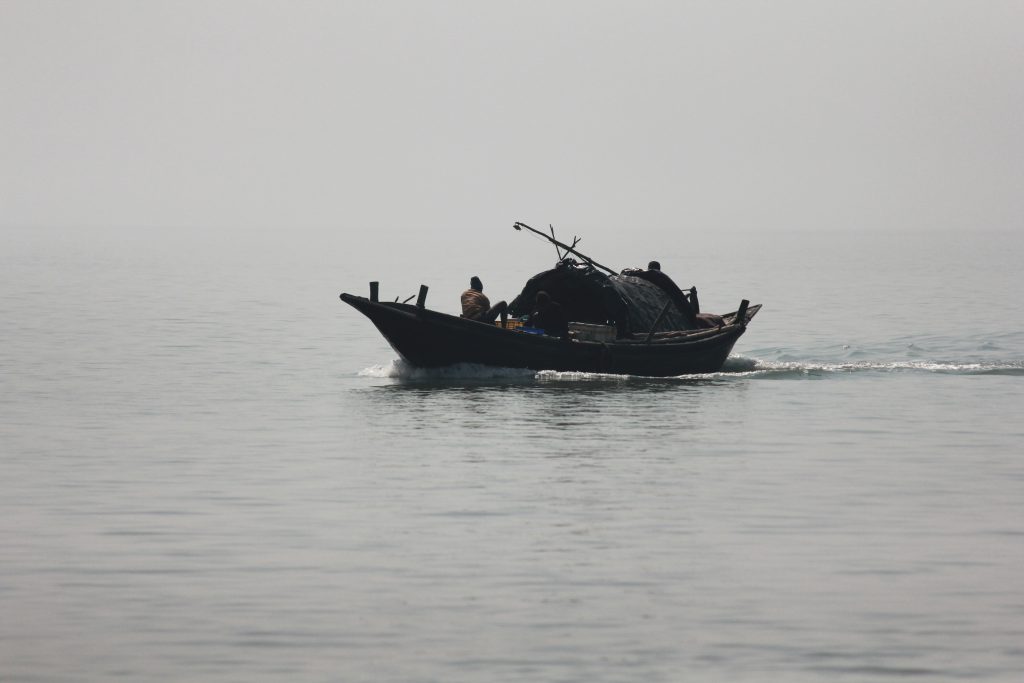When did this start?
Delta Lives is a framework which happened over time, and as with all passion projects which dream big, it is not easy to give this an inauguration or initiation day. It grew from many-seeded ideas of certain keora fruits splattering to a wooly mesh of questions. And then developed tender twigs, and hints of branches.
We had grown up 70 kilometers away from the lowlands, and our parental homes were on the same deltaic basin – more inland. The mangrove forests and the people who lived closest to them were always there, at the margins of our lives- as tales of fantasy and terror.
In the news channels, we saw wreckage- first when cyclone Aila struck. This was in 2009, and we were in school. Some of us went as student volunteers- as ‘relief workers’ with supplies, to make amends. There were boats of people, waiting, their homes washed away by the tides.
The IMD would come to describe this place – the Sundarbans, as the “cyclone capital of India”. The Sundarbans is also known as the largest mangrove habitat of the Royal Bengal Tigers in the world. Since 1987, UNESCO recognises it as a World Heritage Site.
Growing up in the 90-s and the 2000-s, we heard stories of people – often honey gatherers or fishers, losing their lives in the forests, in conflicts with tigers. The rivers, channels and creeks were rife with crocodiles (kumir) and small sharks (kamot). The local dailies and the television channels flashed news of these conflicts- especially when a tiger forgot the boundaries (between human and wildlife habitations), swam over to peopled islands and had to be returned to the forests.
Intrigued by one of these news bytes, we must have looked up some facts and figures: Out of the 102 islands of the Indian Sundarbans delta covering 4000 square kilometers, 54 are inhabited by humans; the rest are forested.
Later, we returned to the place, on college excursions and as part of research projects, trying to understand different aspects of the terrain- often plant, animal or human ecology and culture. We realized that the strands of life and living were inevitably drowned by two overarching narratives- of tiger attacks and climatic disasters.
From Kamal Chowdhury’s detailed book Chabbis Pargana (24 Parganas), we learnt more about the fluctuating geomorphology of the Sundarbans; how the locals have over the centuries given it various names: ‘Byaghratati’ (land of tigers), ‘Bhatir Desh’ (land of the tides), ‘Samudraban’ (sea- forest) and ‘Sundarban’ (beautiful forest or the forest of the sundari trees).
Also familiar with the Bono Bibi dance drama traditions emerging from the Sundarbans, we were asking ourselves: How much of life, as it is currently lived in the delta, is captured in these performances? What would it take to know these people, as we know our next-door neighbour who listens to Bach in the middle of the night, from up-close beyond the veneer of “paala gaan” or narrative songs and news of attacks and disasters?
Delta Lives took some time to anchor- much like the stilt and prop roots of the mangrove plants holding on for dear life to the quicksilver muddy soil. But from the start, the project has been guided by a central aim- to familiarise the world to the Sundarbans people through multimodal stories told by them on a webspace which is co-created with them, over time. This space while trying to break the digital divide invites them to self-express and find allies online.
Delta Lives aspires towards equity – social and gender, and tries to facilitate the formation of independent identities, bringing the world to the deltas. It is also envisioned as a confluence for the deltas people.
We’ll explore the unfolding of Delta Lives in the coming weeks.

